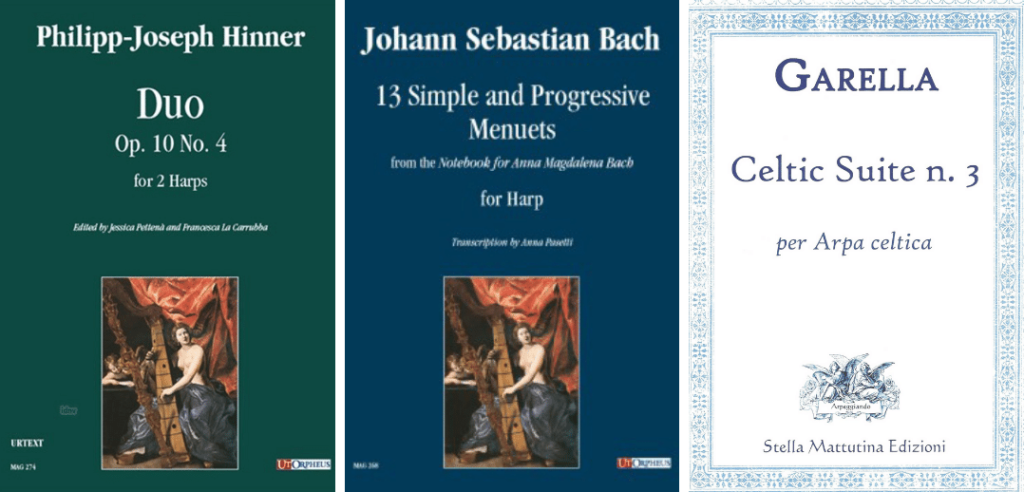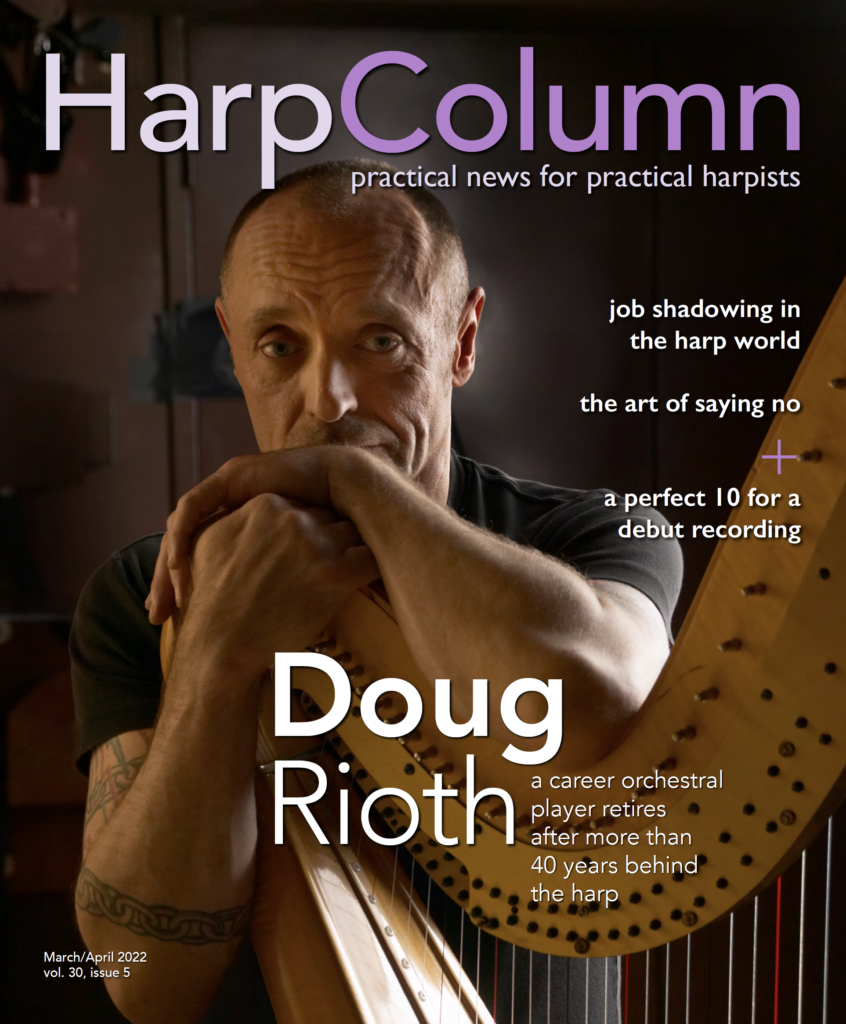
Have you ever heard of Philipp-Joseph Hinner? His name was unfamiliar to me when I received some publications from UtOrpheus bearing his name as composer. I was intrigued because there were four volumes of this Duo from opus 10 for two harps. Each volume comes with a score and separate parts for Harp 1 and 2. They are edited by Jessica Pettenà and Francesca La Carrubba.
Hinner’s work is, indeed, worth another look.
Philipp-Joseph Hinner (1754–1784) was a German composer and harpist. He already played harp when his family took part in the French expedition organized to colonize French Guyana in South America in 1763. The project ended tragically and Hinner was orphaned at the age of 10. He was taken to Paris where he studied harp with Francesco Petrini. His career was launched when he performed at a public concert for religious celebrations, the Concert Spirituel. Most of his professional career was spent in the French royal court where he was harp teacher to Marie Antoinette for seven years. Among his compositions during his very brief life were numerous sonatas for harp with violin accompaniment, and an opera in three acts, La Fausse Délicatesse. He was mentioned only briefly in Roslyn Rensch’s book, Harps and Harpists.
Why renew interest in this duo work and composer that seem to be largely forgotten? The editors explained their purpose: “Rediscovering, studying, and analyzing the musical art of Hinner means enhancing a piece of the eighteenth-century harp music mosaic.”
The two parts in Hinner’s opus are fairly balanced, with Harp 1 being slightly more complex than Harp 2. Each duo has several movements. Hinner includes quotes or themes of other pieces in his compositions. Both parts have an opportunity to play the melody, and the two harps frequently harmonize in Duo No. 1. The second duo features the French aria, “Ô ma tendre Musette.” No. 3 includes a theme, “Sentir avec ardeur,” from an opera by Nicholas Dezède. No. 4 features a theme from Gluck’s “Iphigénie en Aulide.” All of these themes had apparently been used by Hinner’s harp teacher, Petrini.
The music is printed on oversized, cream-colored stock, and the typesetting is easy to read. Pedal markings are not provided. These would make wonderful pieces to play with students—they are challenging enough to require concentration to execute well but not so simple as to be boring. Hinner’s work is, indeed, worth another look.
Another useful, recent publication from UtOrpheus is a collection of transcriptions by Anna Pasetti of works by Johann Sebastian Bach. 13 Simple and Progressive Menuets for harp from the Notebook for Anna Magdalena Bach is a delightful assortment of Bach’s compositions. Many of us study Grandjany’s collection of arrangements of Bach’s unaccompanied violin sonatas and partitas, but this volume is aimed at introducing younger or less advanced students to Bach’s music. The goal is to familiarize them with polyphonic writing, presented here in an easy and progressive manner. The book also introduces the use of a simplified version of embellishments.
These minuets include some of Bach’s simplest and most familiar melodies. They do get progressively more difficult. There are no page turns on any minuet. All pedal markings appear in the middle of the staff. Fingering is included. Teachers will appreciate this welcome addition to the teaching tools available for young students.
If you don’t want to move pedals, you might consider a recent publication from Stella Mattutina Edizioni. Celtic Suite n. 3 is a compilation of five original pieces by Daniele Garella. All of this music was mandatory repertoire at the IX International Harp Contest in Italy, evidently for the up to age 15 category. It is entirely diatonic except for one piece.
“Suantraige” (Enchanting Melody) is just two pages and in 2/4. The left hand often jumps between the treble and bass clef. There are a lot of sixteenth notes in the busiest section of the piece with a few large rolled chords followed by an arpeggio at the end.
“Adbanna cruit” (a Harp Melody) has several meter changes, grace notes, and some large rolled chords. “Gaeth im Muir” (Wind on the Sea) has syncopated left-hand chords that provide a pulse for accompaniment underneath the right hand’s wistful, single-note melody.
“Mad fri samrad” (Sweet Summertime) is in A-flat major and has some meter changes as well as some accidentals. Although this is a suite for Celtic harp, it would be difficult to play this one on a Celtic harp both because of the key signature and the numerous accidentals. None of the changes are marked for either pedals or levers. It is, nevertheless, an appealing selection for pedal harp.
The final melody is “In Muir Muaid” (Reflection of Light on the Sea). It opens with a graceful arpeggio followed by some delicate chords. The left hand assumes the melody while the right hand plays a sixteenth-note pattern. Some descending scales end the piece.
This music is not too difficult but still presents some more demanding sections. The sixteenth notes, sometimes in an Alberti style pattern, are a recurring treatment of this composer. He uses it in every selection and it requires clean technique. Therefore the music is more suited for an intermediate player. The book offers some nice recital repertoire for young players like those in the harp contest. •







